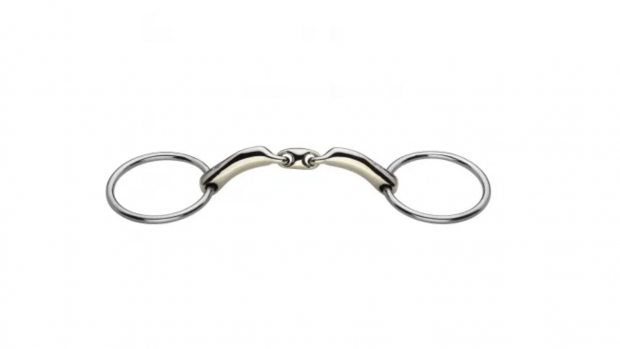“Most polo ponies play in either a pelham or a gag snaffle, and those that are more comfortable in a “broken” bit prefer the gag,” says polo player, Julian Hipwood.
“Though the uninitiated consider the gag severe, it is far better for a horse to respond to the pressure of the bit immediately than to pull and fight against an ordinary snaffle, especially as the majority of polo players are professionals, who are capable riders.
“I use a copper gag, which helps the horse to salivate, with big plain rings. I don’t like eggbutt mouthpieces, but that’s only a personal thing.
“Some polo players also use latex wrapped around the bit to encourage salivation and I put honey in the horses’ mouths for the same reason – a moist mouth is a responsive mouth. But some of the other players don’t like me doing this because they get froth and slobber on their breeches!
“A polo pony must stop or turn in fractions of a second, and be flexible and agile, and try to understand quickly what the rider wants.
“Even the ponies that usually play in a pelham will perhaps be schooled in a gag the day before the match so that they are alert and attentive to the action of the hand.
“Attention to the teeth ofa polo pony is crucial and they are rasped in quite a different way by the polo dentists. The tables are “rounded off” a lot more than in the mouth of a riding horse, so the gag is actually more effective.”
“No horse is allowed to be ridden without a bit in its mouth under the rules of the Hurlingham Polo Association and any martingale other than the standing is forbidden so that there is no other action on the reins other than the riders hand.”



